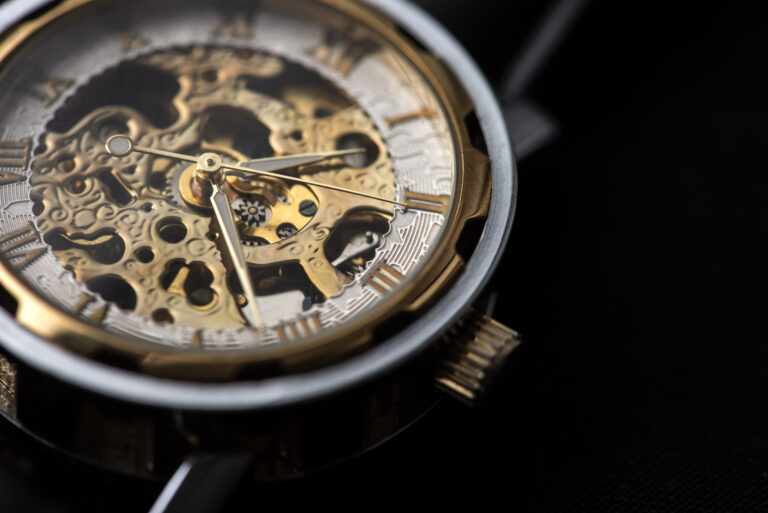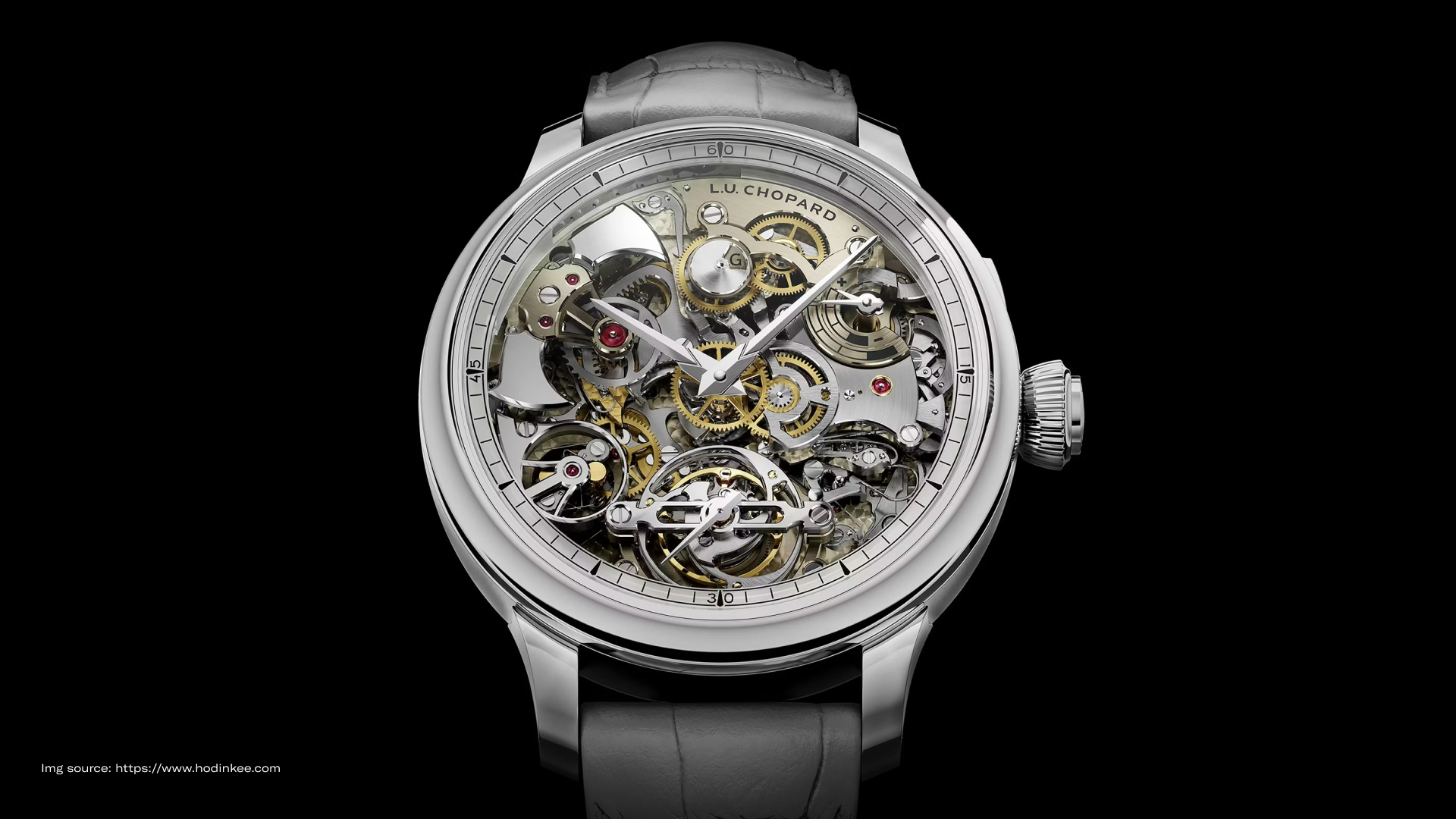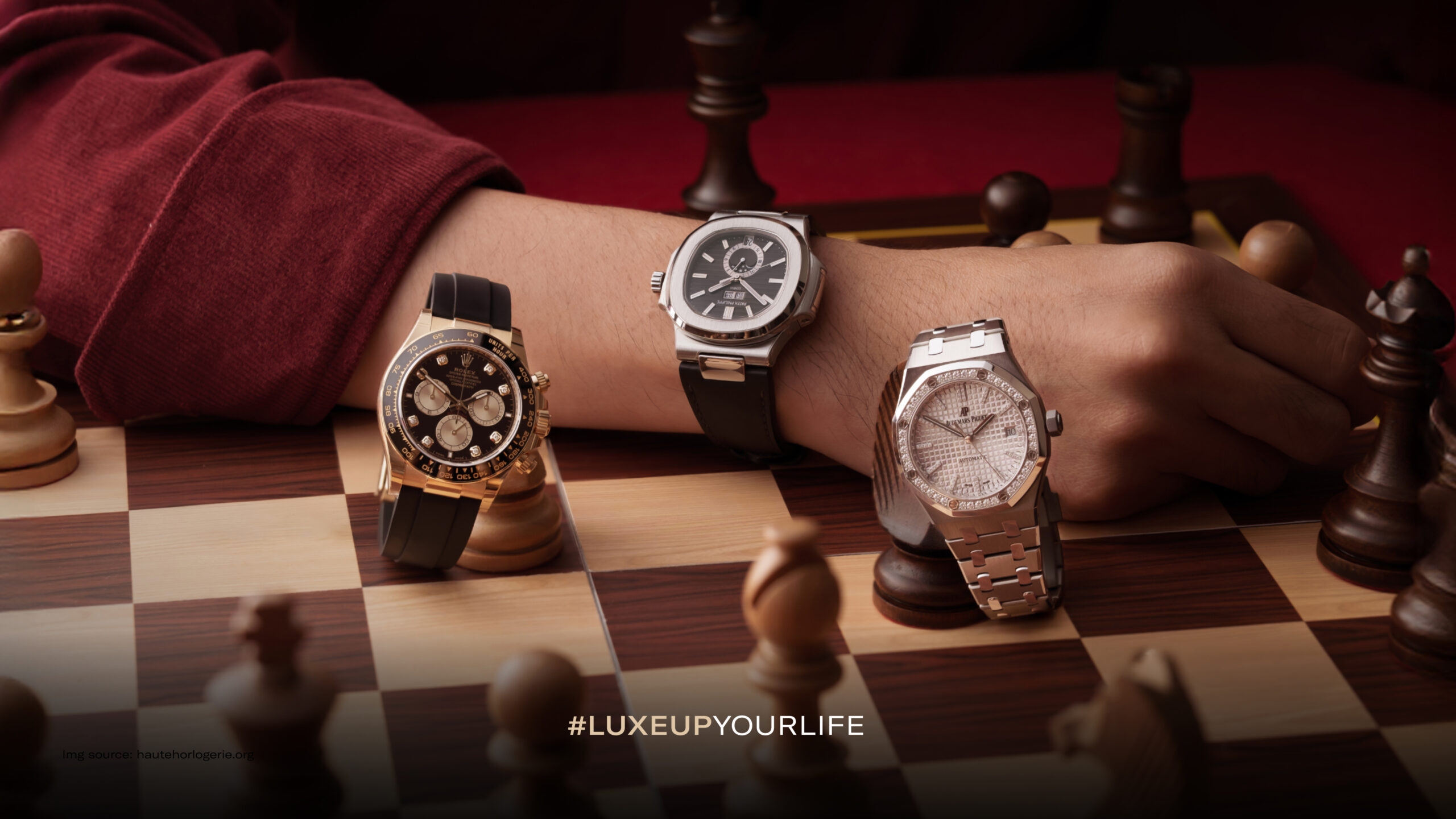Haute horology is a term that represents the pinnacle of watchmaking, where precision engineering meets artistry and tradition.
Rooted in centuries-old craftsmanship, it goes far beyond the function of telling time, embodying the highest standards of design, innovation, and exclusivity.
From intricate complications like tourbillons and perpetual calendars to hand-finished movements and rare materials, haute horology distinguishes itself as the most refined expression of horological art.
In the sections that follow, we will explore the history, defining characteristics, and enduring significance of haute horology.
Table of Contents
ToggleWhat Is Haute Horology?
Haute horology, translated from French as “high watchmaking”, refers to the most exclusive and refined segment of the watchmaking industry. It encompasses timepieces that embody exceptional craftsmanship, technical innovation, and artistic expression.
Unlike standard luxury watches, haute horology creations often feature intricate complications, such as perpetual calendars, tourbillons, and minute repeaters, crafted by skilled artisans through countless hours of meticulous hand-finishing.
Examples of watches considered haute horology include Patek Philippe’s Grand Complications, Audemars Piguet’s Royal Oak Concept, Vacheron Constantin’s Traditionnelle and Métiers d’Art collections, and Jaeger-LeCoultre’s Hybris Mechanica masterpieces.
Read More: Top Luxury Watches for Men in 2025 – Elegant & Timeless Choices
The Birth of Haute Horology
The origins of haute horology trace back to the master watchmakers of 18th-century Europe, particularly in Switzerland and France. This was a period when horology began to evolve beyond functional timekeeping and into an art form.
Watchmakers experimented with intricate complications such as perpetual calendars, moon phases, and minute repeaters, features that demanded extraordinary skill and patience.
These early innovations laid the foundation for watchmaking as both a science and a craft, establishing the principles that continue to define haute horology today.
By the 19th and early 20th centuries, renowned maisons such as Patek Philippe, Vacheron Constantin, Audemars Piguet, and Breguet emerged as pioneers of fine watchmaking.
Over time, haute horology became synonymous with precision, rarity, and artistry, shaping the legacy of mechanical watchmaking even as the industry entered the modern era.
What Sets Haute Horology Apart from Other Luxury Watches
While luxury watches are celebrated for their craftsmanship, style, and prestige, haute horology exists in an entirely different realm.
What sets it apart is not only the exclusivity of its creations but also the depth of artistry and mastery infused into every detail. Let’s find out more below.
1. Innovation
True haute horology pieces push the boundaries of what mechanical watchmaking can achieve, incorporating groundbreaking complications such as tourbillons, minute repeaters, and perpetual calendars.
These innovations are not mere novelties but represent the pinnacle of precision engineering and creative problem-solving.
Innovation also extends to materials and techniques. From the use of silicon components to improve movement efficiency to experimenting with exotic alloys for durability, haute horology continuously evolves.
2. Legacy
The legacy of haute horology is rooted in centuries of watchmaking tradition, where the knowledge and artistry of master craftsmen have been passed down through generations.
Brands such as Patek Philippe, Vacheron Constantin, and Audemars Piguet have built their reputations over hundreds of years, creating timepieces that reflect both heritage and continuity.
This sense of lineage adds immense value to haute horology watches, making them not only luxury goods but also living pieces of history.
Beyond brand heritage, legacy also refers to the timeless techniques that remain integral to haute horology.
Read More: The Beginner’s Guide to Starting a Luxury Watch Collection
3. Design
Design in haute horology is far more than aesthetics, it is the art of harmonizing beauty with function.
From elegant case shapes to hand-finished dials featuring enamel, engraving, or gem-setting, the design of each timepiece is meant to captivate as much as it serves practicality.
These details distinguish haute horology watches as wearable art, objects of admiration even when they are not on the wrist.
Moreover, the design philosophy reflects exclusivity. Many haute horology pieces are produced in extremely limited numbers, ensuring uniqueness for their owners.
4. In-house movements
Unlike mass-produced calibers, haute horology movements are meticulously designed, assembled, and finished by hand.
The result is not only mechanical precision but also visual beauty, with details such as polished bevels, perlage, and intricate bridges that transform the movement into a work of art.
In haute horology, complexity is a hallmark of excellence. Movements may feature multiple complications, sometimes combining several in a single watch, a feat that requires extraordinary technical expertise.
Each component, often no larger than a grain of rice, is crafted with obsessive attention to detail, reflecting the pursuit of perfection at every level.
Haute Horology Brands
In the world of haute horology, three maisons stand at the very pinnacle, often referred to as the “Holy Trinity of Watches”: Patek Philippe, Audemars Piguet, and Vacheron Constantin.
These brands embody centuries of mastery, innovation, and prestige, each contributing unique legacies that have shaped the landscape of fine watchmaking.
1. Patek Philippe
Patek Philippe is synonymous with timeless elegance and technical mastery. Founded in 1839, the brand is revered for its Grand Complications, watches that combine multiple complex functions such as perpetual calendars, minute repeaters, and split-second chronographs.
Each Patek Philippe timepiece is meticulously hand-finished, often taking years to complete, which cements its reputation as one of the most coveted names in haute horology.
Collectors prize the brand not only for its innovation but also for its unmatched legacy of value and exclusivity.
2. Audemars Piguet
Founded in 1875, Audemars Piguet is best known for daring to break tradition while upholding exceptional craftsmanship.
The brand revolutionized luxury watchmaking in 1972 with the launch of the Royal Oak, the first luxury sports watch in steel, designed by the legendary Gérald Genta.
Beyond its iconic designs, Audemars Piguet is also celebrated for its sophisticated complications and avant-garde creations, blending boldness with traditional watchmaking expertise.
3. Vacheron Constantin
Established in 1755, Vacheron Constantin holds the distinction of being the world’s oldest continuously operating watchmaker.
The brand has built its legacy on a commitment to artistry and technical excellence, producing timepieces that balance intricate complications with refined aesthetics.
Its Traditionnelle and Patrimony collections exemplify classical design, while its Métiers d’Art line showcases handcraft techniques such as enameling and engraving.
For collectors and enthusiasts, owning a piece of haute horology is not just about telling time—it is about carrying history, artistry, and excellence on the wrist.
All watches from haute horology brands can be found at Luxehouze, where you’ll discover a wide selection of authentic luxury timepieces, offered at the best prices to elevate your collection. So, visit Luxehouze today!












